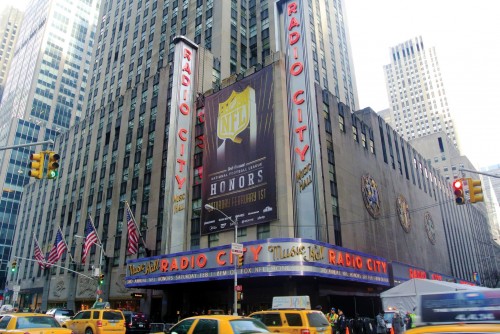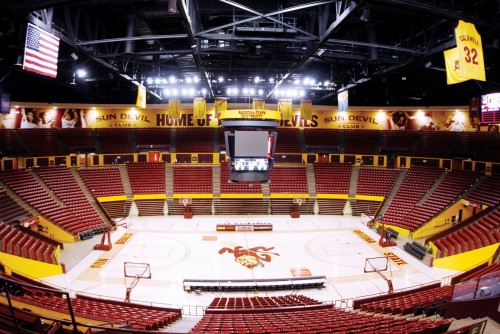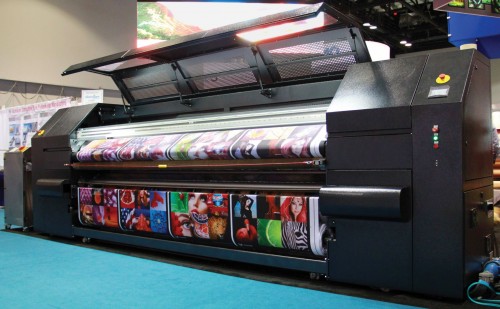
Compared to transfer sublimation, the heavier ink load of direct sublimation is beneficial for flags and backlit graphics, which require greater ink density. Photo courtesy Creative Graphic Services/Photo courtesy PrinterEvolution
Ink developments
As elsewhere in the sign industry, the wide-format printers used for dye sublimation have seen much progress over the years, in terms of faster speeds, greater efficiency and higher-quality output. Dye sublimation inks, however, have been slower to evolve.
In the past, solvent- or oil-based inks were common for wide-format dye sublimation, neither of which were environmentally friendly, colour-vibrant or particularly easy to work with. Smaller printers used water-based inks, but were generally very slow and used the afore-mentioned coil-based heat systems, which left many steps to be completed after printing.
Today, however, there has been much progress in water-based inks for larger printers, achieving a vibrant colour gamut and greater batch-to-batch consistency. Compared to earlier options, these inks offer a higher pigment load, higher yields and lower cost per litre.
Finishing
If there is one area of the fabric printing business that is still somewhat lacking in proficiency, it is finishing.
 One of the strongest selling points of fabric graphics is the ability to form them in almost imaginable shape with ease, beauty and seamless appearance. This ability, however, has not tended to be part of a typical sign shop’s skill set.
One of the strongest selling points of fabric graphics is the ability to form them in almost imaginable shape with ease, beauty and seamless appearance. This ability, however, has not tended to be part of a typical sign shop’s skill set.
One key is to plan for finishing right from a graphic’s conceptual stage. Specifications for sewing, stretching and framing should be worked into the design from the start so as to take into consideration such factors as shrinkage and skewing.
Sign shop employees may be intimidated at first by the need for specialized skills and, indeed, fabric graphic finishing should not simply be left to an existing print production crew without the right training and tools. With the right investment in a dedicated finishing department, however, a sign shop can certainly build sufficient knowledge and expertise to provide high-quality finishing in-house as a lucrative part of the business, rather than outsourcing it.

Some printers offer ‘in-line’ heat press sublimation, with an on-board heat press calender. Photo courtesy PrinterEvolution
Customer trends
As awareness of the high-quality appearance and easy manageability of fabric graphics, many types of customers are fuelling this industry trend.
In the trade show business, for example, exhibitors are painfully aware of the costs for drayage and shipping from show to show. The difference in weight between the typical vinyl or rigid graphics and lighter fabric graphics is extraordinary, but another advantage of the latter is the ability to use the same eye-catching booth imagery for multiple events, rather than having to reprint graphics for each show.
This convention and exhibition market tends toward the look and feel of soft knit materials, which offer the four-way stretch capabilities needed for silicone-edge graphics (SEG) and tension frames. They also generally offer a matte finish, which is desirable to prevent glare on signs under all of the lighting of a large exhibition hall.





